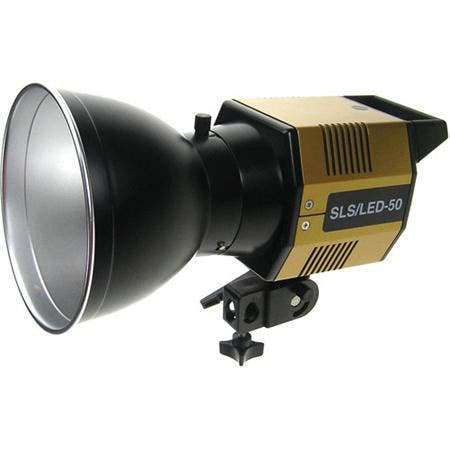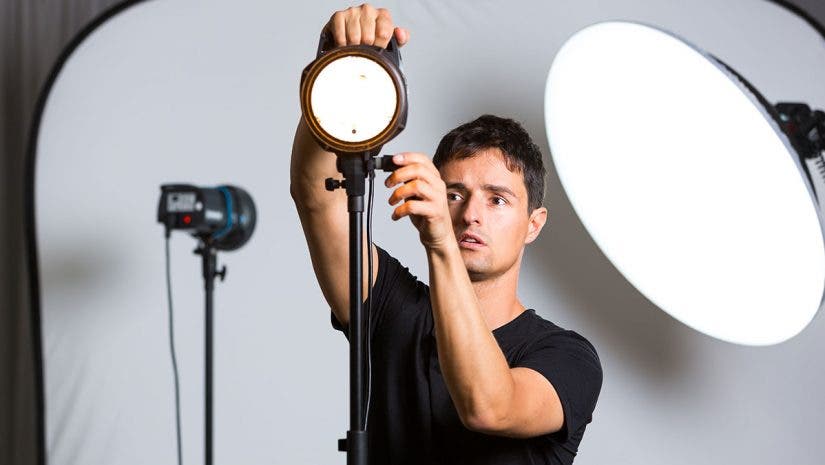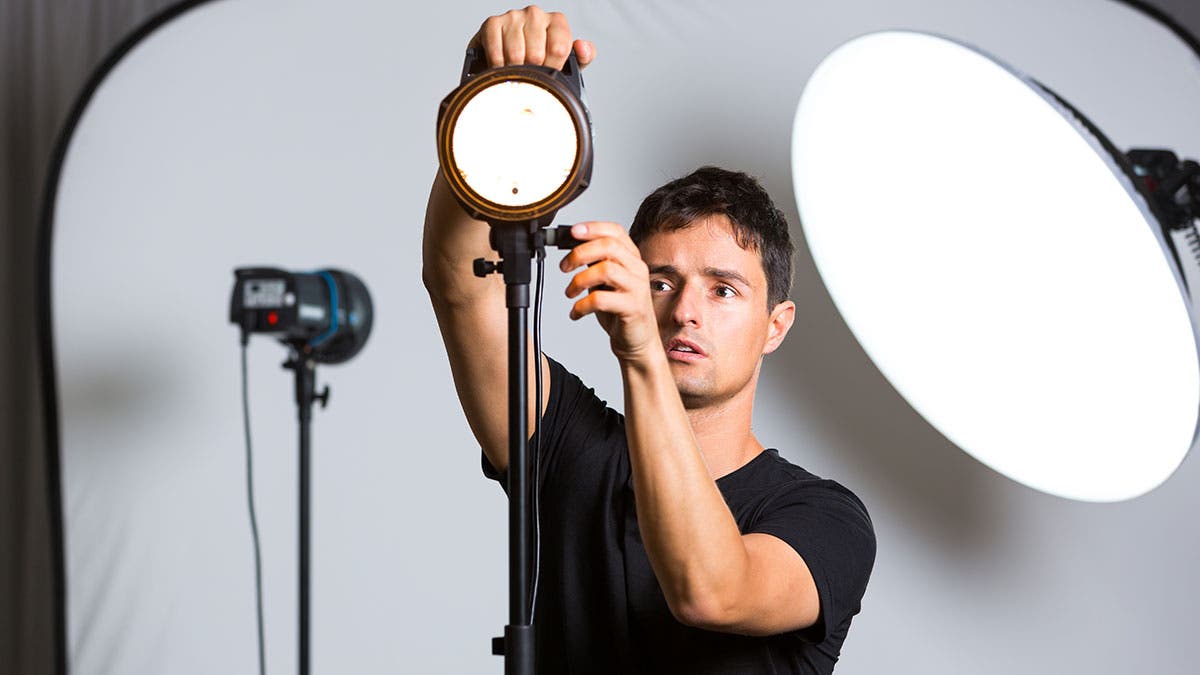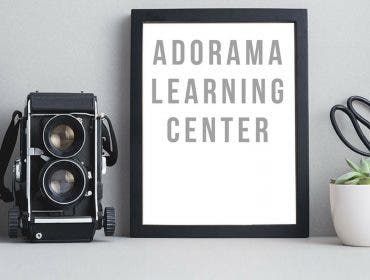
If you’ve replaced a lightbulb in the last couple of years, you’ve probably considered an LED instead of a traditional bulb or even a CFC. For still photographers using continuous studio light (or thinking about it), you, too can join the LED revolution by simply swapping out your existing bulb for a similar color balanced LED, or by purchasing an LED light kit.
The big advantage of LEDs is that they tend to stay relatively cool, they last a really long time, and use a fraction of the energy of CFC, incandescent or tungsten bulbs. The cost per bulb is higher than the other alternatives (a 250-watt LED lamp costs $36, while an equivalent tungsten flood lamp only costs $3.10), but prices are coming down. And even if they cost more, you won’t need to replace them for years.
For these reasons, photographers rarely use finicky, hot halogen or power-hungry tunsten bulbs any more. And, with their more environmental-friendly parts, LEDs are quickly replacing fluorescents as well.

Most LED-based studio lighting is designed for video use—but can also be used for still photography. This is especially true with lights that are made of panels that house dozens of small LED bulbs. Many LEDs are relatively low-output affairs, since video work is done at closer range and less light is needed. Some models, such as the Bescor LED-500KB Twin 500W ($499) offer higher wattage and provide a lot of light for studio work. (The Bescor comes with a battery kit so you can take it on location without worrying about where to plug it in.) The advantage of LED lights made for video in a still photography studio is that many of these units let you dial in the color temperature you desire, typically ranging from daylight to tungsten, while others let you switch from one to the other.
The Flashpoint CL-500R LED Circular Light Kit ($400; shown at the top of this article) follows a traditional photographer-friendly circular dish design that emulates reflectors, but is constructed with 500 LED lamps in the panel design. It consumes 35 watts, but gives off 3,600 lux at 3.3 feet, the equivalent of a 60-watt lamp. That’s sufficient for product photography and head shots.

Other LED light kits use special bulbs designed for photographers that put out the same kind of light you used to get from tungsten lamps.
The Savage 500W LED Studio Light Kit ($135.99) consists of two lamp holders, stands, umbrellas, and a pair of 250 Watt bulbs that consume only 30 watts of power. This is a low-cost way to get into LED continuous-light photography.

The SP Studio Systems 50W LED Studio Light ($199.95) looks like a studio flash, but contains a 50 watt LED light source with a 5600K color temperature and a dimmer. A 100 watt version is also available for $279.95. Both are budget-friendly ways to get into LED lighting for your studio.
Or, Convert a CFL or Tungsten System
Any fixture that will take a standard screw-in lightbulb will take LEDs. Systems meant for CFL or tungsten can therefore be easily converted. Simply remove the old bulb and replace it with an LED bulb that provides a similar amount of light output, and you’ll get the same light while reducing your electric bills. The advantage? The cost of an continuous light system designed for older light tech is generally lower than all-LED systems, so you can save money by taking this route.
The downside: no variable color temperature option. Since most standard LED bulbs come in daylight or warm output to emulate incandescent light, you need to choose one or the other. I recommend daylight, but be sure to use a colorchecker and the eyedropper tool in post-processing to establish accurate color balance.
If you already have a hot or cool light kit fixture, just swap bulbs and you’re ready to go. If you don’t have one, here are several recommended options:

Flashpoint Cool Light Kit with 2 Reflectors ($169.96) consists of two lighting units (with stands), each with a 16-inch reflector and four sockets. You can replace the 55-watt FLD bulbs with 60-watt equivalent daylight-balanced LEDs that you can buy at your local hardware store and save hundreds of watts of of electricity per light.

The Westcott uLite 2-Light Octabox 200W Fluorescent Kit ($349) comes complete with an octabox diffuser and is ideally suited for portrait photography. Each uLite holds four bulbs; if you use 75-watt LEDs instead of the supplied CFLs, that gives you a bright 300 watts per unit, but you’ll be using less power than a single bulb.

Or, you can go really cheap via the Flashpoint Cool Light 5-Socket Lamp Unit ($16.95). This, along with a Glow Softbox Umbrella, is a great way to go if you already have light stands and the Flashpoint Universal Swivel Holder FPUSH for a flash system that you want to convert to a constant light source.

Finally, for smaller home projects such as photographing products for online auctions, the JTL Single Light & Umbrella Holder ($12.95) is a good choice. It has an umbrella holder and comes with a lightstand. Get a couple of these and shine them directly into a diffusion tent and you’re all set for small-item photography.




